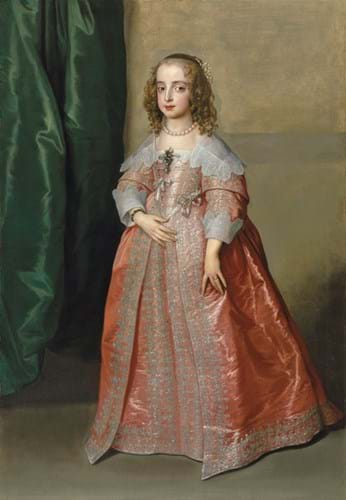
The acquisition, which totalled £5.85m with buyer’s premium, was funded with a grant from the Hungarian government and represented the highest-value purchase in the last 100 years for the institution.
The museum said: “This picture of exquisite beauty will be a true gem in our collection… It fills a gap in the collection since the museum had previously not had any paintings from this period of the master’s œuvre.”
It will go on display alongside 10 works already in the collection, including portraits of other royal children, before featuring in an exhibition dedicated to Baroque painting, Flemish art and Peter Paul Rubens at the Budapest museum in October.
The picture itself sold on low estimate at Christie’s – it was pitched at £5m-8m and was knocked down to a bidder on the phone.
The price was the second highest for a van Dyck at auction, only behind the self portrait which took £7.4m hammer at Sotheby's in December 2009 and later, in 2014, entered the collection of the National Portrait Gallery in London.
Young subject
Dating from 1641, the full length oil on canvas of Princess Mary (1631-60) was painted only months before the artist’s premature death aged 42. The subject was nine at the time and the painting was commissioned by the king to mark her marriage to Prince William of Orange who was 15.
Another version of the portrait, but deemed primarily a studio work, sold coincidentally at the same auction series in December, making £650,000 at Sotheby’s. Two other versions are in the UK’s Royal Collection (hanging in the Queen’s Ballroom at Windsor Castle) and the British embassy in The Hague.
However, the painting bought by the Budapest museum is considered the prime version. It was described by art historian and van Dyck authority Sir Oliver Millar as having “clear signs of having been painted from life”, with the delicacy and lightness of touch to the costume and the shadows cast by the sitter’s hands unquestionably pointing to the artist himself.
László Baán, director general of the Museum of Fine Arts in Budapest, said the acquisition was a “historic moment” due to the rarity of such a work coming to the market that is equal to examples in the world's leading collections.
The museum stated that the portrait "complements the museum’s holdings in perfect accordance with the institution’s collection development and acquisition strategy".





